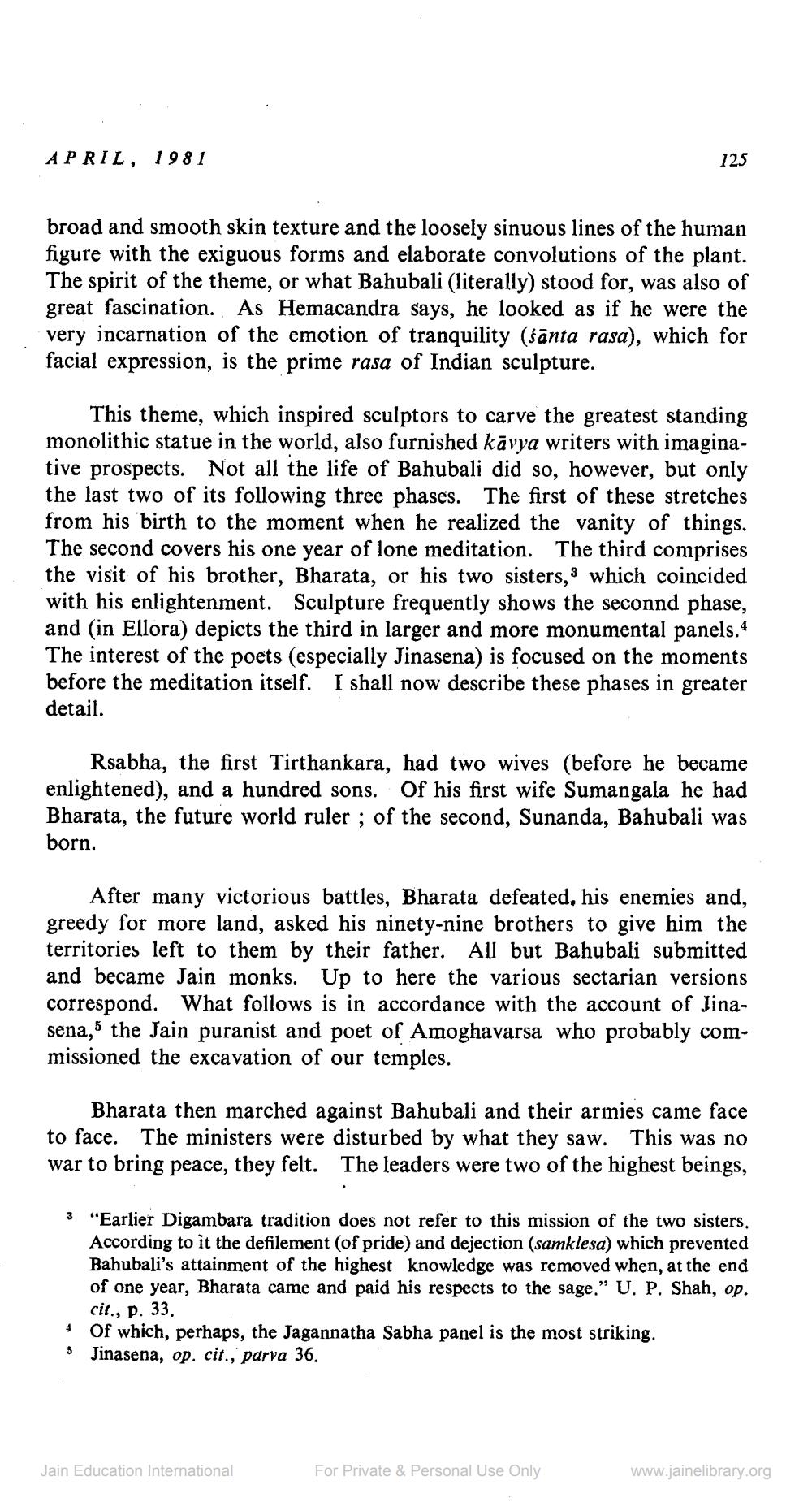________________
APRIL, 1981
broad and smooth skin texture and the loosely sinuous lines of the human figure with the exiguous forms and elaborate convolutions of the plant. The spirit of the theme, or what Bahubali (literally) stood for, was also of great fascination. As Hemacandra says, he looked as if he were the very incarnation of the emotion of tranquility (śānta rasa), which for facial expression, is the prime rasa of Indian sculpture.
This theme, which inspired sculptors to carve the greatest standing monolithic statue in the world, also furnished kavya writers with imaginative prospects. Not all the life of Bahubali did so, however, but only the last two of its following three phases. The first of these stretches from his birth to the moment when he realized the vanity of things. The second covers his one year of lone meditation. The third comprises the visit of his brother, Bharata, or his two sisters, which coincided with his enlightenment. Sculpture frequently shows the seconnd phase, and (in Ellora) depicts the third in larger and more monumental panels.* The interest of the poets (especially Jinasena) is focused on the moments before the meditation itself. I shall now describe these phases in greater detail.
3
125
Rsabha, the first Tirthankara, had two wives (before he became enlightened), and a hundred sons. Of his first wife Sumangala he had Bharata, the future world ruler; of the second, Sunanda, Bahubali was born.
After many victorious battles, Bharata defeated, his enemies and, greedy for more land, asked his ninety-nine brothers to give him the territories left to them by their father. All but Bahubali submitted and became Jain monks. Up to here the various sectarian versions correspond. What follows is in accordance with the account of Jinasena,5 the Jain puranist and poet of Amoghavarsa who probably commissioned the excavation of our temples.
Bharata then marched against Bahubali and their armies came face to face. The ministers were disturbed by what they saw. This was no war to bring peace, they felt. The leaders were two of the highest beings,
3 "Earlier Digambara tradition does not refer to this mission of the two sisters. According to it the defilement (of pride) and dejection (samklesa) which prevented Bahubali's attainment of the highest knowledge was removed when, at the end of one year, Bharata came and paid his respects to the sage." U. P. Shah, op. cit., p. 33.
4 Of which, perhaps, the Jagannatha Sabha panel is the most striking. 5 Jinasena, op. cit., parva 36.
Jain Education International
For Private & Personal Use Only
www.jainelibrary.org




